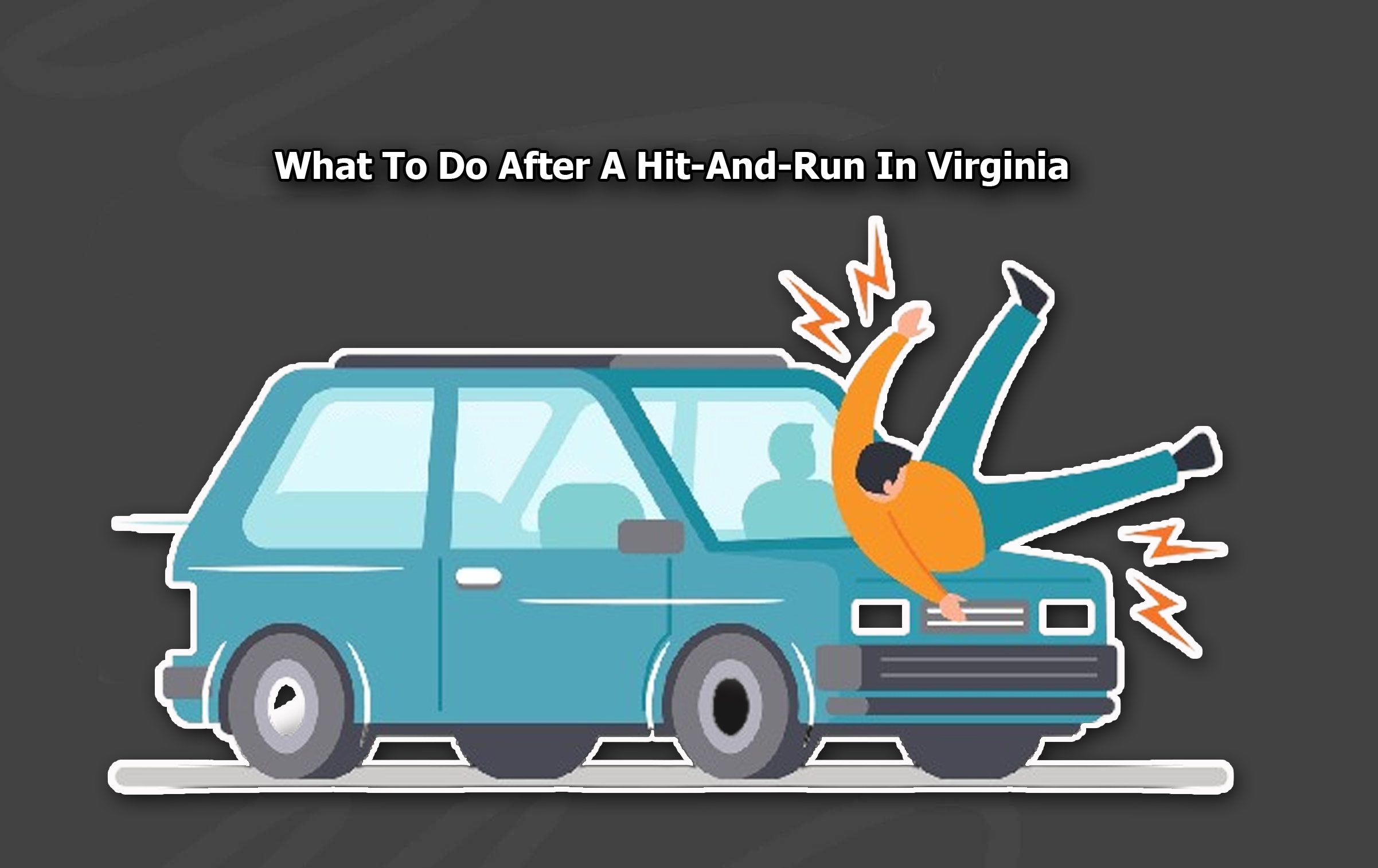
What To Do After A Hit-And-Run In Virginia – Being involved in a car accident is already a distressing experience, but the situation becomes even more stressful when the other driver flees the scene.

Hit-and-run incidents are not only dangerous but also illegal, and it leaves victims feeling helpless and unsure about their next steps.
In Virginia, the country’s law requires all drivers involved in an accident to stop, exchange information, and provide assistance if necessary.
When a driver fails to fulfill these obligations, they are committing a criminal offense, and the victim is left to navigate the aftermath alone.
Furthermore, Virginia takes hit-and-run accidents very seriously, with penalties ranging from fines to imprisonment for the offending driver.
Hence, it drives a need of importance for victims to understand the steps to take immediately after such an incident occurs. This can make a significant difference in protecting their rights and ensuring justice is served.
Steps To Take Immediately After The Incident
When a hit-and-run occurs, your immediate actions are crucial to ensure your safety, gather evidence, and comply with legal requirements. Remaining calm and focused can help you handle the situation more effectively.
Ensure Safety First
Once the accident occurs, move your vehicle to a safe location if it is blocking traffic or posing a hazard. Check yourself and any passengers for injuries. Call 911 if medical assistance is required. Next, you can turn on your hazard lights to alert other drivers.
Gather Information About The Fleeing Vehicle
Try to note the make, model, color, and license plate number of the fleeing vehicle. Also, observe any distinguishing features on the vehicle, such as bumper stickers or visible damage.
Document The Scene
It would be wise to take photos of your vehicle, the location, and any debris or tire marks. Write down the time, date, and exact location of the incident. Additionally, look for nearby surveillance cameras that might have captured the event.
Contact Law Enforcement
Report the incident to the police immediately. Provide them with all the details you’ve gathered. Also, you can obtain a copy of the police report, as it will be crucial for insurance claims and potential legal action.
Notifying Your Insurance Company
After you’ve addressed all immediate concerns, you can proceed to contact your insurance company as it will help manage the aftermath of a hit-and-run accident. Your insurance provider will guide you through the claims process and explain your coverage options.
Filing A Claim
Start by notifying your insurer about the accident. Be prepared to provide:
- A description of the incident, including the time and location.
- Photos and videos you’ve taken at the scene.
- A copy of the police report, if available.
What Is Uninsured Motorist Coverage
In Virginia, uninsured motorist (UM) coverage is a mandatory coverage policy and it helps cover damages when the at-fault driver is unidentified. Moreover, the Uninsured Motorist coverage can compensate for:
- Vehicle repairs.
- Medical expenses.
- Lost wages.
More importantly, make sure you review your policy with your insurer to understand your specific coverage and any limitations.
Seeking Medical Attention And Keeping Records
Even if you feel fine immediately after the accident, it is essential to seek medical attention. There are some injuries, like whiplash or internal damage, that may not show symptoms right away. Also, documenting your injuries promptly ensures your health and strengthens your claim.
Steps To Take
- Start by visiting a healthcare provider for a thorough examination.
- Keep records of all medical visits, diagnoses, treatments, and prescriptions.
- Save the receipts for out-of-pocket medical expenses.
- Follow up with your doctor if symptoms persist or worsen.
Working With Legal Professionals
In some cases, you may need to hire an attorney to protect your rights and pursue compensation. A legal professional experienced in hit-and-run cases can guide you through the complexities of Virginia law and ensure you receive fair treatment.
What’s more, there are many benefits that is associated with hiring a lawyer and they include:
- Assistance with gathering and presenting evidence.
- Representation in court if legal action becomes necessary.
- Negotiation with insurance companies for a fair settlement.
Prevention Tips For The Future
While it’s impossible to prevent every hit-and-run, there are steps you can take to reduce your risk and protect yourself in case of an accident. These tips to stay safe are:
- Parking in well-lit, high-traffic areas.
- Installing a dash cam to record incidents on the road.
- Ensuring your insurance coverage is up to date and sufficient.
- Stay alert and practice defensive driving.
Hopefully, these tips will help you be more prepared in avoiding the case of a hit and run accident. Nevertheless, at least you know what to do after a hit-and-run In Virginia.
Frequently Asked Questions
What Is The Penalty For A Hit-and-Run Driver In Virginia?
The penalty depends on the severity of the accident. For property damage alone, it is a Class 1 misdemeanor, which can result in up to 12 months in jail and a $2,500 fine. Also, if the hit-and-run involves injury or death, it is considered a felony with harsher penalties, including prison time.
Can I Still File A Claim If I Didn’t Get The Other Driver’s License Plate Number?
Yes, you can file a claim even without the license plate number. You also provide as much information as possible, such as the make, model, and color of the vehicle, along with any eyewitness accounts or surveillance footage.
How Long Do I Have To File A Claim After A Hit-and-Run In Virginia?
Virginia’s statute of limitations for personal injury claims is two years from the date of the accident. However, it is best to file a claim as soon as possible to avoid complications.